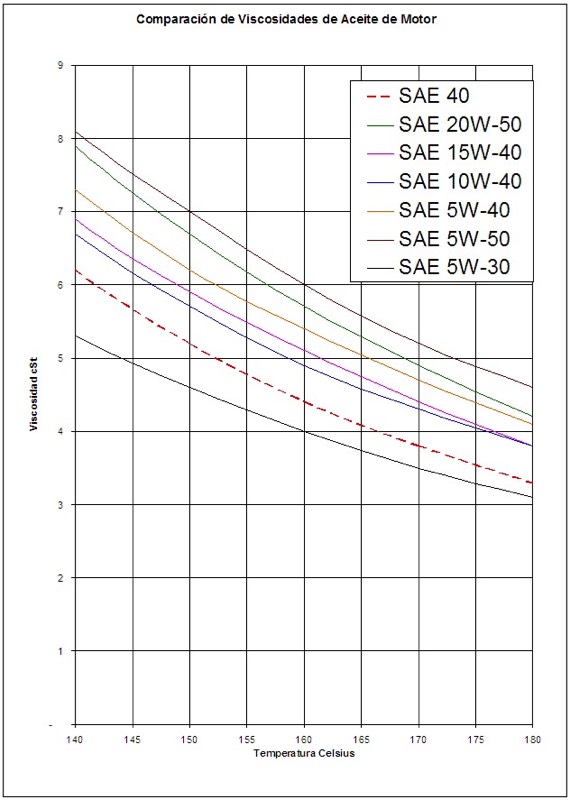Motor Oils
A comparison of viscosity between different oils at the temperature of the moving parts.
A SAE 40 starts out more viscous than the rest in the cold, but less viscous in the hotter parts of the engine, like bearings, rings, turbos, and valve guides. This viscosity loss in the single grade is part of the problem of oil consumption.
A synthetic 5W-40 starts out with much less viscosity, pumping and lubricating better, but then maintains better viscosity in hotter parts of the engine.
This graph is for typical products of these advertised viscosities.
To calculate the viscosity curve for any specific oils, using their data sheets, click here.
To see more detail at the different temperatures, click the appropriate temperature range.
-
Between 0°C and 30°C
Between 0°C and 30°C The SAE 40 is more viscous ("thicker") and harder to pump than all the rest of these oils. The engine will operate without lubrication for several seconds until the oil heats up and flows properly. You can also see here that even a 10W-40 is too viscous for the majority of the cars on the road today in the moment of starting the engine.
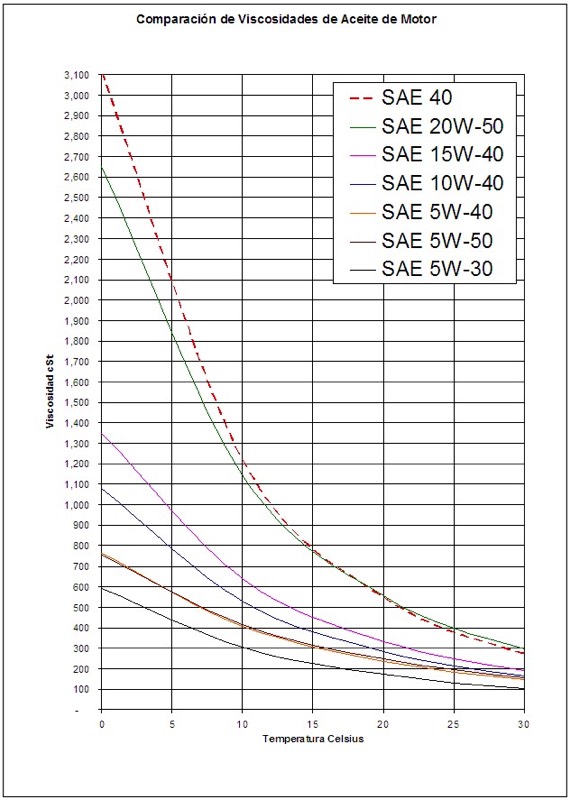
-
Between 20°C and 60°C
While the engine is heating up, the oil viscosity drops to the ideal viscosity for your engine. You should not force the engine or run it at high speed until the viscosity is below 20 cSt im most cases.
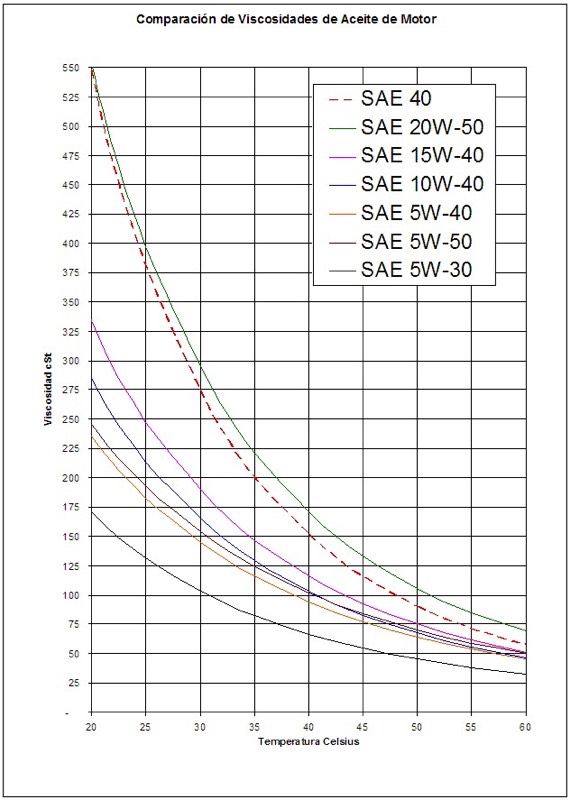
-
Between 40°C and 80°C
In this temperature range, the viscosity curves of several oils begin to cross, showing how much better the ones with a higher viscosity index protect. Somewhere just over 80ºC the engine's thermostat begins to open and control the water temperature between 80º and 100ºC.
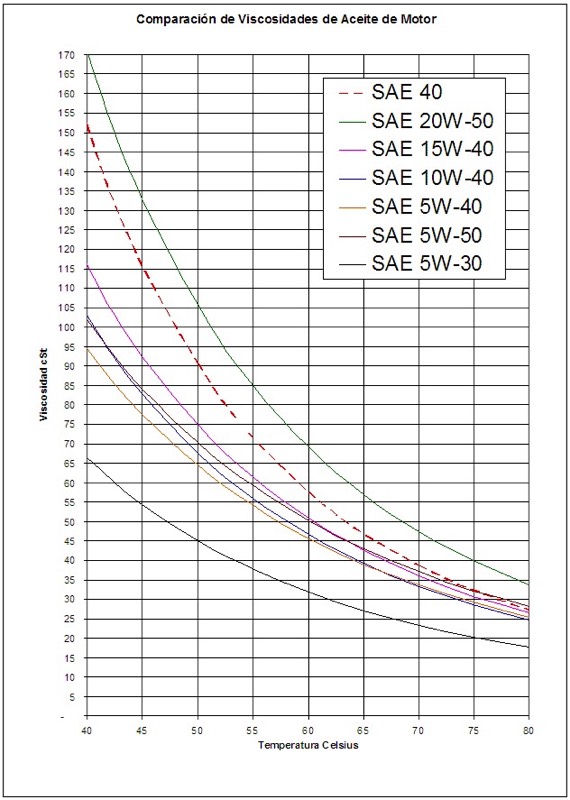
-
Between 60°C and 100°C
Note here that a single grade SAE 40 oil begins to thin out to less than the rest of these oils at around 73ºC.
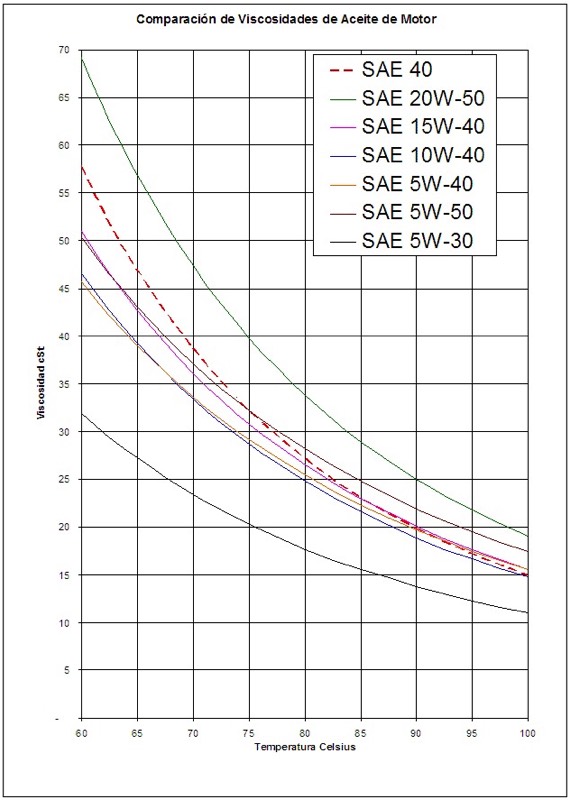
-
Between 80°C and 120°C
Here we can see that after about 102ºC the SAE 40 is thinner (less viscous) than the rest of the oils except the 5W-30. The normal temperature of the motor is between 80ºC and 100ºC. We need to consider the design of our motor and the correct viscosity at that temperature.
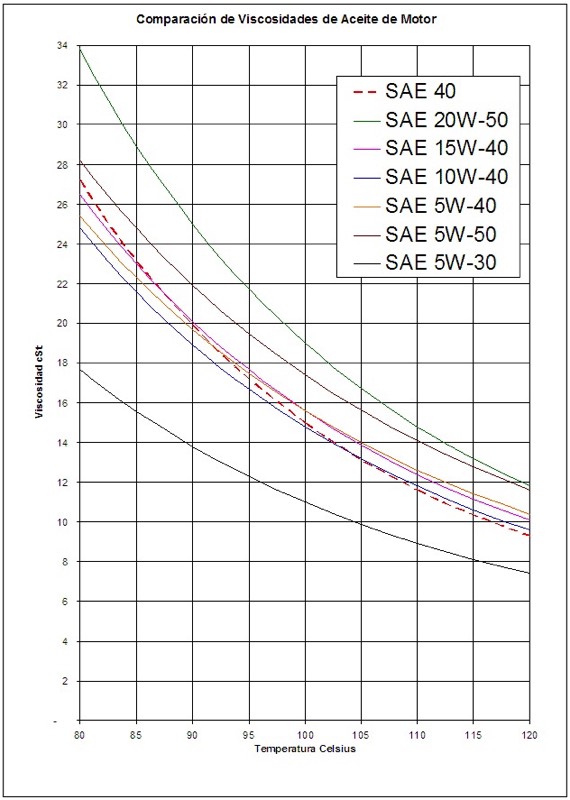
-
Between 80°C and 180°C
This is the area of work in the engine (including the turbo that operates close to 180ºC). While the ideal viscosity varies between motors, in general we want a viscosity between 9 and 16 cSt to protect the parts.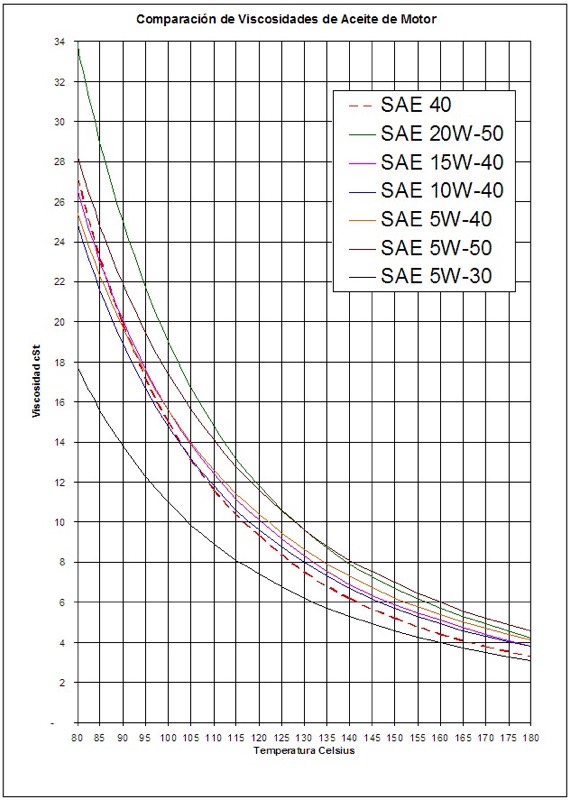
-
Between 140 and 180°C
This is the zone where various engine parts operate, such as the rings and turbo.
